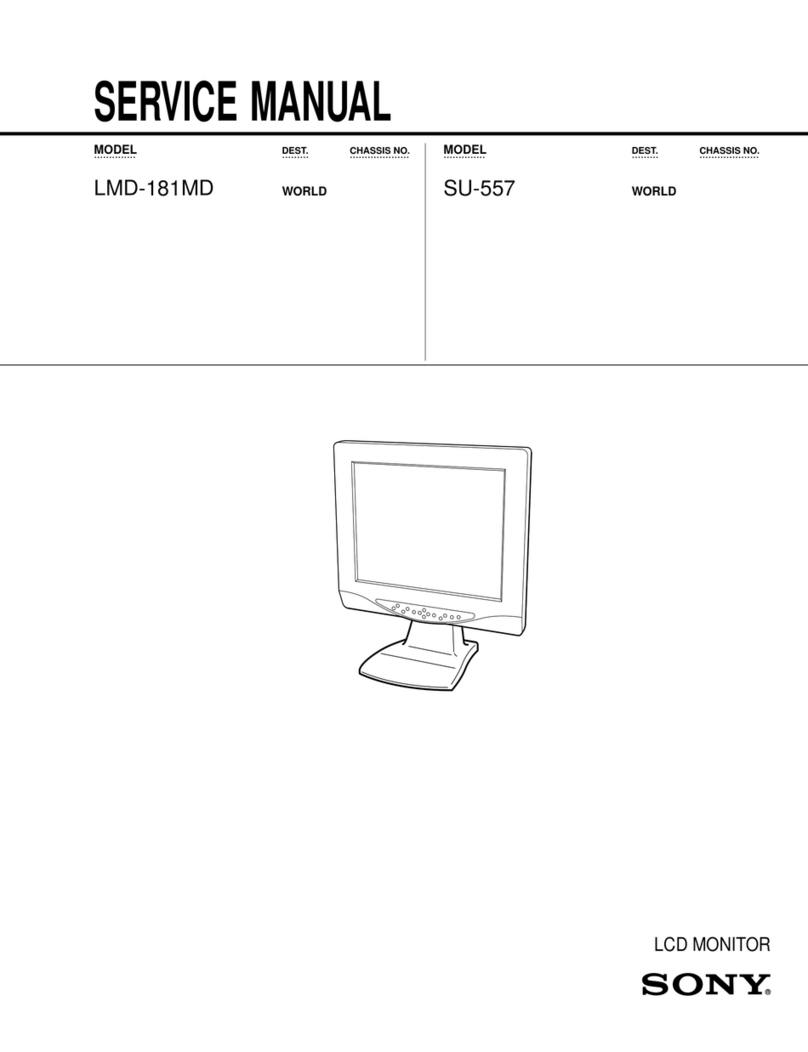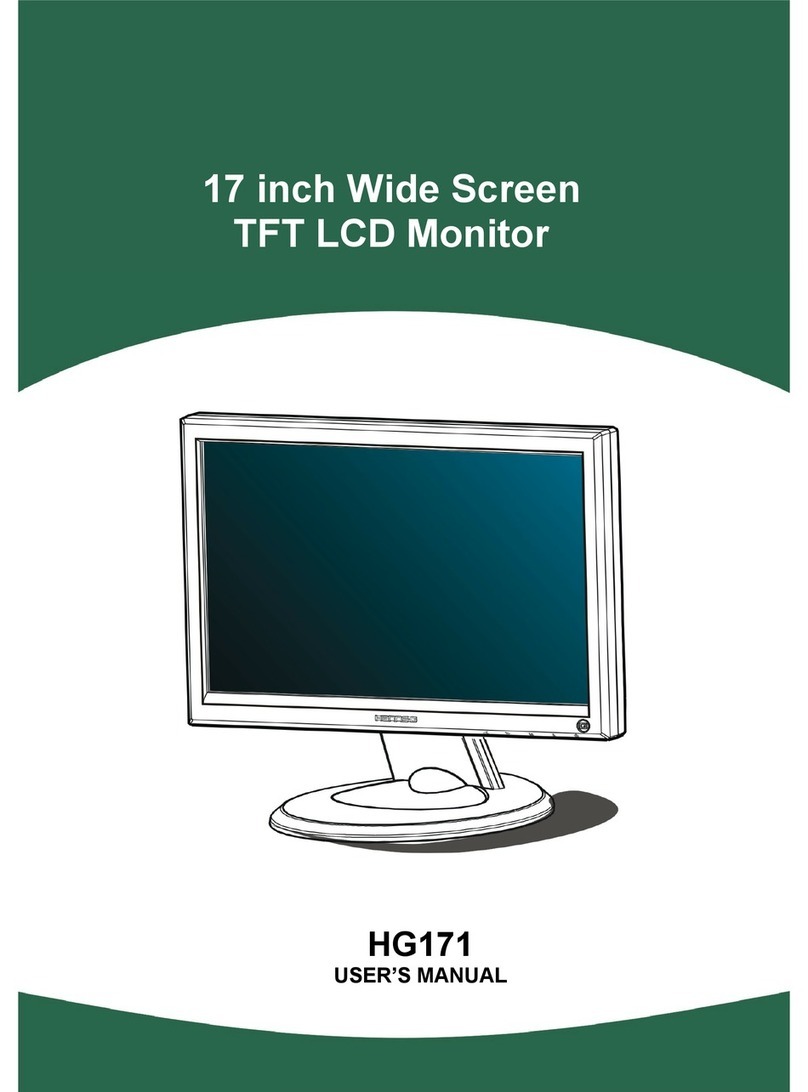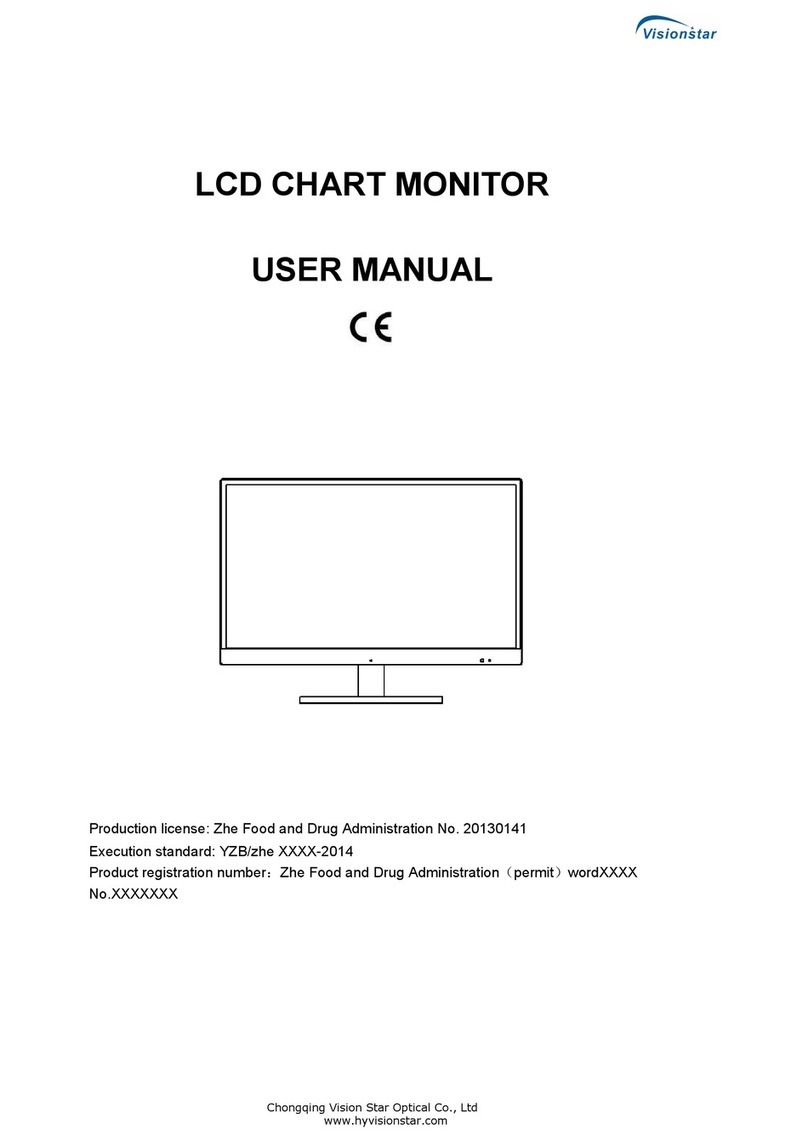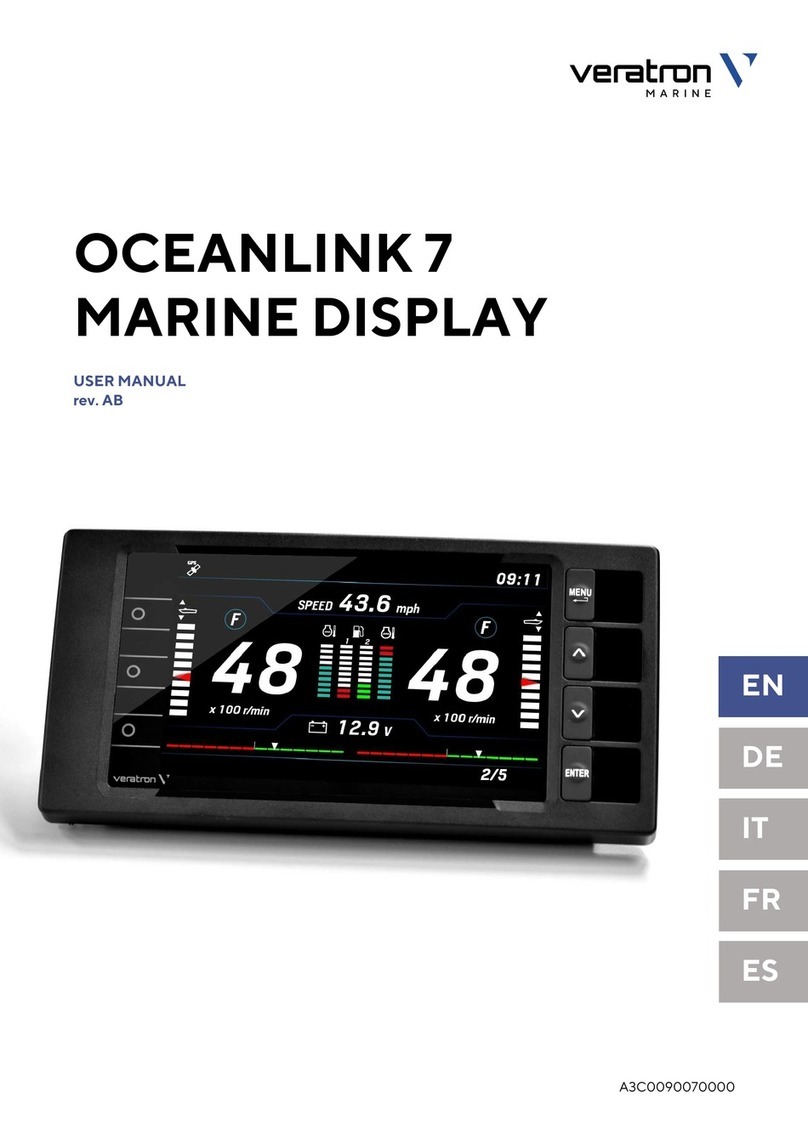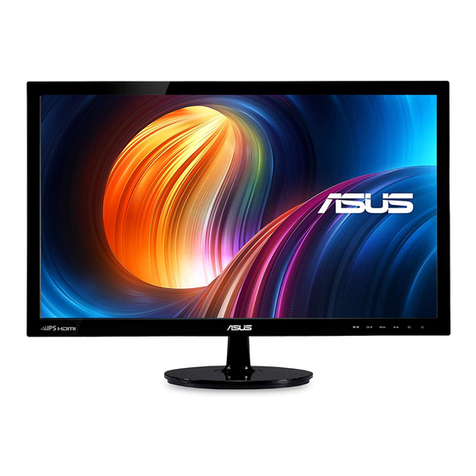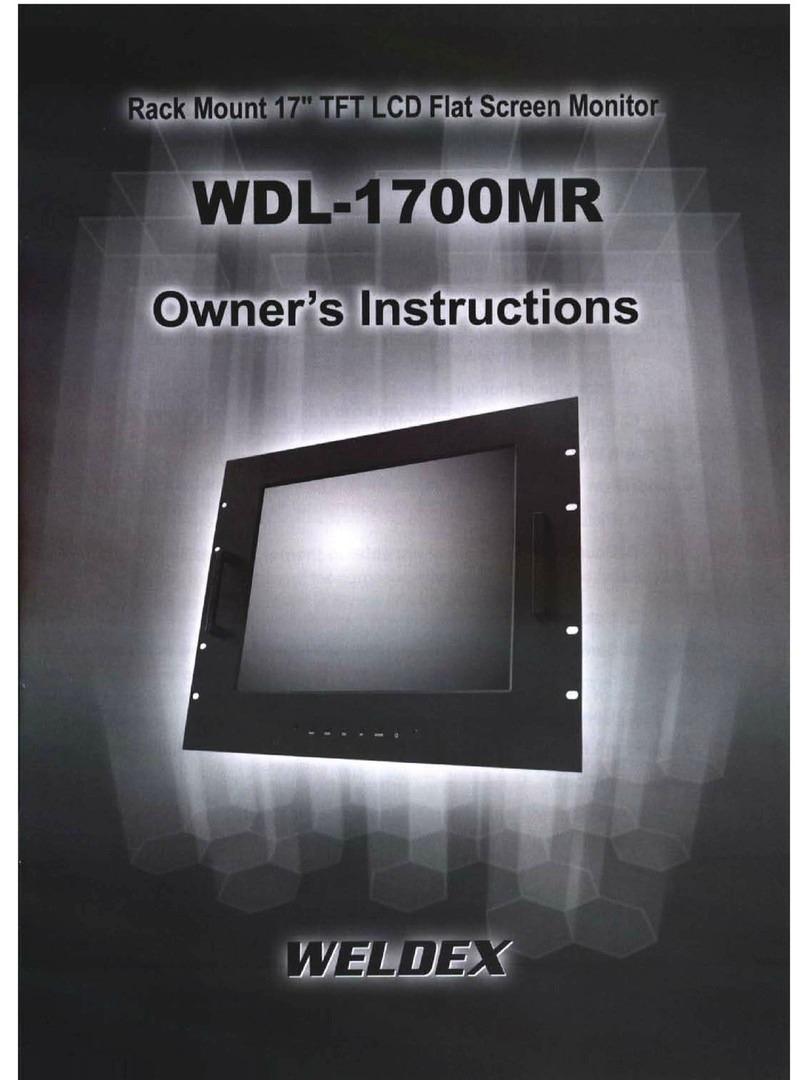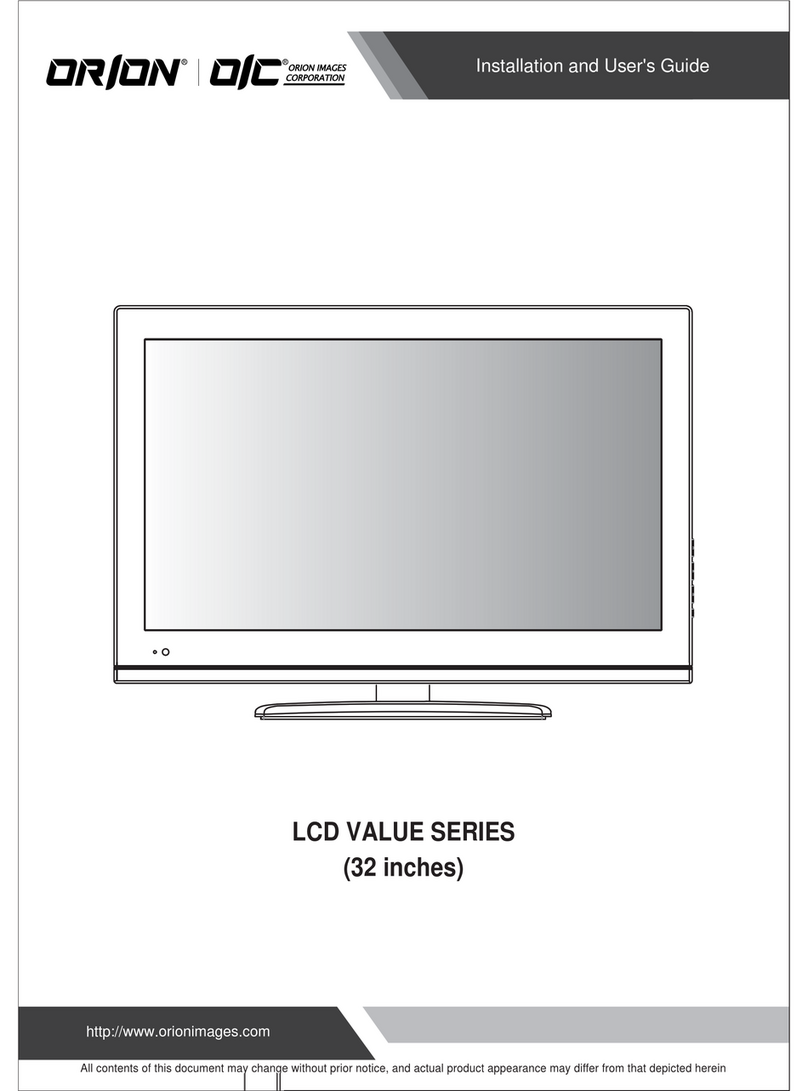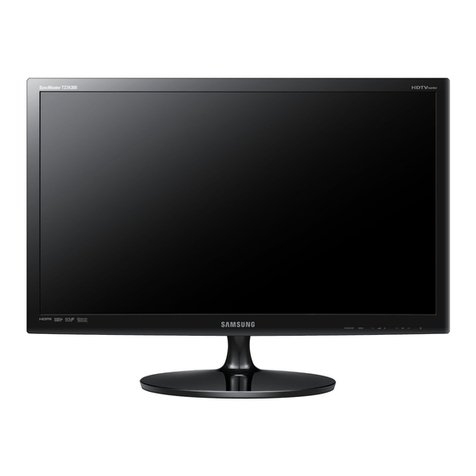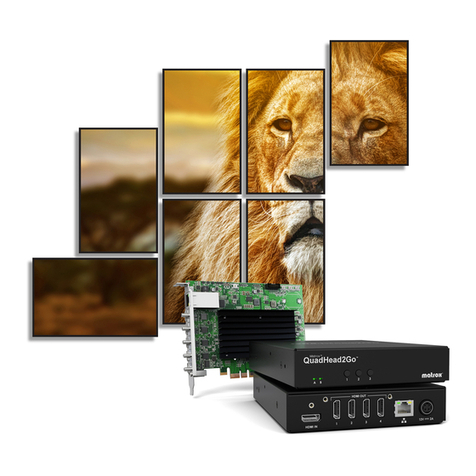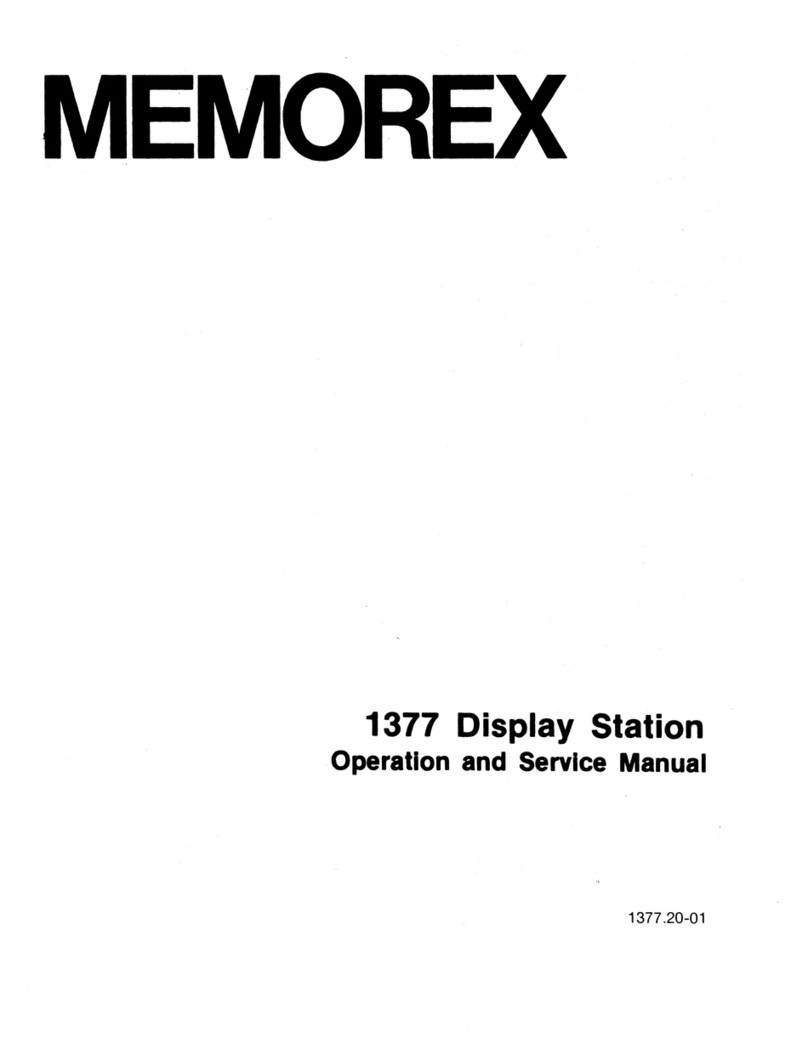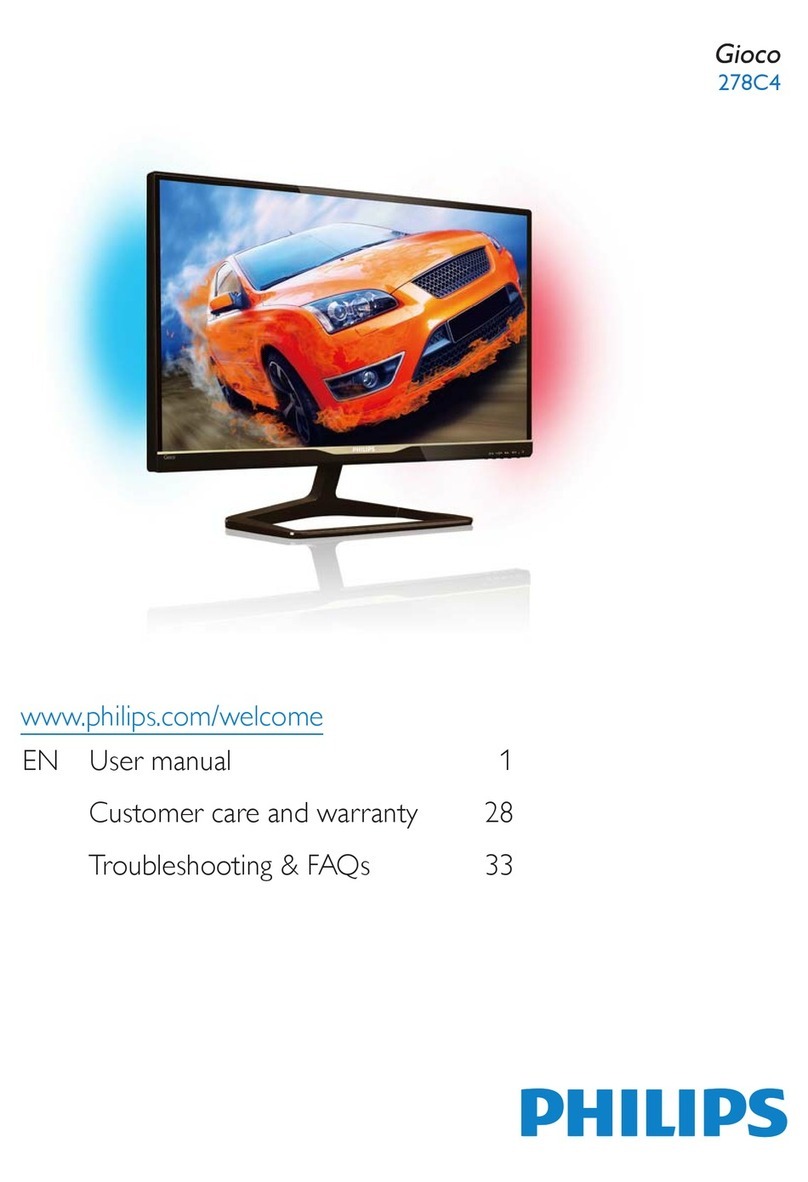Idmed ToFscan User manual

User Manual ToFscan 1
User Manual
NeuroMuscular Transmission Monitor
Version 1.8 EN - DR
Last Update 2021/03/05
Ref: TOF-IFU_EN_DR

User Manual ToFscan 2

User Manual ToFscan 3
CONTENTS
About this product............................................................................................... 4
Indications for use ............................................................................................... 4
Expected performance....................................................................................... 4
Clinical benets .................................................................................................... 4
Important Information about the use of this device........................... 4
Safety measures................................................................................................... 5
Warning................................................................................................................................5
Caution.................................................................................................................................6
Explanation of the symbols .......................................................................................8
I General information ......................................................................................... 9
Overview of the ToFscan and its accessories .................................................9
Main menu, Display screen...................................................................................... 10
Menu selection ............................................................................................................... 10
Battery / AC power supply operation................................................................ 10
II ToFscan setup ....................................................................................................11
Cable / Cable connection .........................................................................................11
Electrodes............................................................................................................................11
Positioning of the electrodes ....................................................................................11
Placing of the sensor....................................................................................................12
Skin impedance..............................................................................................................13
Connecting the cable to the ToFscan ............................................................... 14
Reference or “REF”.......................................................................................................... 14
III Using the ToFscan..........................................................................................14
General principle........................................................................................................... 14
TOF mode.......................................................................................................................... 15
TET mode............................................................................................................................17
DBS mode...........................................................................................................................17
PTC Mode............................................................................................................................17
ST Mode.............................................................................................................................. 19
Parameters Menu.........................................................................................................20
IV Servicing, Disinfection cleaning..............................................................21
Preventive servicing, Maintenance.......................................................................21
Battery / Battery charge ............................................................................................21
Cleaning and disinfection....................................................................................... 22
Diagnostics / Possible dysfunctions.................................................................. 22
V End-of-life disposal / Recycling.............................................................. 22
VI Technical specications and warranty..............................................23
Environment.................................................................................................................... 25
VII Accessories.....................................................................................................26

User Manual ToFscan 4
About this product
This operating manual provides the instructions on how to congure and use the ToFscan from
IDMED. It also describes the specic procedures to clean and verify the device as part of the
necessary maintenance. This manual is intended to be used only by qualied medical personnel.
Keep this operating manual with the ToFscan. A service manual is available for the technicians in
charge of maintenance.
Before you start, please make sure you read carefully and understand the safety information
contained in this manual.
Indications for use
The ToFscan is a neuromuscular transmission monitor for monitoring the neuromuscular block of a
patient in the operating theatre, recovery room or intensive care unit.
The effect of neuromuscular blocking agents (NMBAs) is monitored by measuring the
acceleration of the muscle movement (acceleromyography) or by visually observing
muscle contractions consequent to electrical stimulation. The ToFscan has a three-dimensional
acceleration sensor (accelerometer) to detect and quantify a patient’s muscle movement. For the
thumb (contracting adductor pollicis), the sensor is directly integrated into the nger’s splint, making
it possible to obtain its optimal and reproducible positioning. For the eyebrow and big toe sensors, a
correct sensor position allows for optimal and reproducible measurement.
Expected performance
The following features are essential performance of the device:
- Stimulation of an anesthetized patient with electrical pulse: repeated or single 200µs square pulse,
20mA to 60mA intensity. All values within +/- 10%
- Allow several stimulation sequences in accordance to usual practice, TOF, PTC, ATP, DBS, TET, ST.
- Measure the muscle response of the thumb, big toe of the foot or the corrugator muscle of the
eyebrow following electrical stimulation. The result of this measurement is to detect a movement
generated by the muscle concerned and the ratio of the amplitude of the rst and last movement to
the during the same stimulation.
Clinical benets
The following characteristics are the clinical benets of the ToFscan:
- Intra-operative: Enable practitioners to monitor patients’ intra-operative muscle relaxation
- Post-operative: To diagnose residual blockade of the patient
Important Information about the use of this device
The compact ToFscan is intended for use by health professionals (anaesthetists, doctors or fully
qualied nurse anaesthetists) specially trained in the use of this instrument. The device and all of the
settings associated with it are designed for use on adult and paediatric patients in hospital or health
institutions so that the patient’s neuromuscular block level can be monitored.
The ToFscan measurements of the patient’s muscular response can be used to monitor the effects
of neuromuscular blocking agents.
The interpretation of ToFscan results must always be subjected to clinical assessment and
compared against other observed clinical signs. Sole reliance on the results or values rendered by
the ToFscan for the monitoring of curare-administered patients, is strongly discouraged. The values
measured in patients with neurological disorders, nervous system disorders, Bell’s palsy, myasthenia
or general neuromuscular disorders must be carefully interpreted.
The ToFscan is compliant with the European directive on medical devices and with the current
regulatory requirements of the countries where it is distributed.

User Manual ToFscan 5
For further information, kindly contact the ToFscan manufacturer IDMED through his internet website
(www.idmed.fr) or by mail at the following address:
IDMED
Hôtel Technoptic
2 rue M. DONADILLE
13013 MARSEILLE FRANCE
ToFscan®and IDMED®marks are property of IDMED company (France) in several countries.
SAFETY MEASURES
INTRODUCTION
Read this entire manual carefully before using the ToFscan.
WARNINGS, CAUTIONS, NOTES
The terms Warning, Caution and Note have specic meanings in this manual.
• A WARNING cautions against certain actions or situations likely to cause bodily harm or death.
• The word CAUTION warns against actions or situations likely to damage the equipment, produce
inaccurate data or cancel a procedure, even if bodily harm is less than likely to occur.
• A NOTE provides relevant information about a function or procedure.
EXPLANATION OF THE SYMBOLS
The symbols which may be displayed on the ToFscan screen are recapitulated and explained at the
end of this section.
Any serious incident occurring in relation to the device must be notied to the manufacturer and the
competent authority of the Member State in which the user and/or patient is established.
Warning
Risk of explosion: do not use the ToFscan in a ammable environment or in places where
ammable anaesthetic products are accumulated.
The ToFscan is not designed to operate in an environment where there are SCANNERS, M.R.I.’s
or any other device creating large magnetic elds. The same applies for short-wave or
medium-wave treatment devices.
The electrode cables, electrodes and connections must not come into contact with any other
item, conductive or otherwise.
In order to reduce the risk of burns when using high-frequency surgical devices, do not place
the ToFscan stimulation electrodes between the surgical site and the electrode leading back to
the electrosurgical unit.
Simultaneously connecting a patient to a high-frequency surgical device may cause burns at
the contact points of the ToFscan electrodes and cause damage to the device.
Never use the ToFscan at the same time that debrillation devices are being used.
Like all neuromuscular transmission monitor, the ToFscan must be connected to electrical
stimulation electrodes capable of supporting up to 300 volts with 60 mA current. The contact
surface of the electrodes must be greater than 1.8cm² (0,28in²).

User Manual ToFscan 6
The output from electrical stimulation causes nociceptive stimulations and the intensity of
these stimulations must be adapted to the patient’s analgesic level.
Do not use the ToFscan on patients wearing pacemakers without verifying and identifying the
possible consequences. The user must take all the necessary precautions during the operation
for this kind of patient.
Prior to use, check that no other equipment, device or material is in contact with the electrodes.
Sensors and electrodes should only be in contact with clean and healthy skin
Prior to each use, check that the device, the display and the cables (electrodes and sensors) are
not damaged. Do not use if a part is damaged
Handle the device with care to prevent any fall.
The ToFscan should be used during a limited time on one patient at a time and cleaned between
patients.
The ToFscan can be used fully or partially during the surgery. The duration should not exceed
24H.
After positioning one of the sensors in contact with the patient, check regularly at least every 2 to
3 hours that the sensor does not cause excessive pressure or stress on the patient’s skin. If skin
appearance changes, change the site sensor.
Portable RF communication equipment (including peripherals such as antenna cables and
external antennas) should not be used within 30 cm (1 foot) of any part of the ToFscan, including
accessories specied by the manufacturer.
Use of this equipment adjacent to or stacked with other equipment should be avoided because
it could result in improper operation. If such use is necessary, this equipment and the other
equipment should be observed to verify that they are operating normally
Use of accessories, transducers and cables other than those specied or provided by the
manufacturer of this equipment could result in increased electromagnetic emissions or
decreased electromagnetic immunity of this equipment and result in improper operation.
Use cables other than the one recommended by the manufacturer of this equipment could
result in increased cyber security risks.
Caution
Read this entire manual carefully before using the ToFscan.
Never put the ToFscan or any of its parts or accessories into an autoclave.
Do not submerge or spray the appliance or any of its parts with liquids.
The ToFscan and its parts are not suitable for the processes of gas, radiation (gamma or other),
water bath, steam or heat sterilisation.
Follow the instructions given in the “Cleaning and disinfection” section for cleaning and disinfecting
the ToFscan.
The ToFscan carries an internal lithium-ion battery. The ToFscan battery should under no
circumstances be dissembled, modied or replaced. Any tampering with the battery poses the risk

User Manual ToFscan 7
of combustion or explosion. Only an authorised technician or IDMED employee is qualied to perform
such operations.
After an extended period of disuse (storage), recharge the ToFscan battery for at least 2 hours
before use. If the ToFscan does not switch on when the wheel selector is pressed, the battery needs
to be replaced.
Only qualied technicians are authorised to carry out repairs or maintenance procedures with the
consent of IDMED.
The ToFscan user must take care not to come into contact with other electrical devices when using
the ToFscan.
Before performing electrical stimulation with the ToFscan, the practitioner must assess the
appropriateness and strength of the stimulation that can be applied to the patient.
Never touch the electrodes during the stimulation phases. The electrodes are only surface electrodes
and are suited for the application of electrical stimulation.
Do not use cables or accessories other than those supplied with the ToFscan.
The using of electrosurgery device in the same time as ToFscan can interfere the measurement and
the results of it.
In order to prevent electrostatic shock, the device must be used in an electrostatic limited
environment. (see Environment section)
ToFscan has been designed to stimulate patients via electric impulsions. As a matter of fact, data
recorder (EEG, ECG) can detect these electrophysiological signal impulses. These perturbations are
transitional and depend how these devices are congured.
Notice on Electromagnetic Compatibility (EMC) : This device generates, uses, and can radiate
radio frequency energy. If not set up and used in accordance with the instructions in this manual,
electromagnetic interference may result. The equipment has been tested and found to
comply with the norm IEC60601-1-2 for medical electrical equipment. These limits provide
reasonable protection against electro-magnetic interference when operated in the intended use
environments (e.g. hospitals)
Contraindications to use the ToFscan : None known
The pictures in this manual are for illustration purposes.

User Manual ToFscan 8
Explanation of the symbols
General symbols
Caution Serial number
Indicates a requirement for
separate treatment of
end-of-life general waste.
Labelling in compliance with
the European directive on
medical devices
Date of rst CE marking:
2013
Manufacturer IP 30 Protection class against solid
foreign bodies and liquids.
Not protected against liquids.
Refer to the operating manual Type BF Applied Part
Direct Current DC Manufacturing Date
Temperature limit Lot code
Humidity limitation Catalogue reference
Atmospheric pressure
limitation
Curtis-Straus Mark
(USA and Canada)
Prescription use device in USA Medical device
Single-use Use-by date
MM
YYYY Manufacturing Date
Caution: USA federal law restricts this device to sale by or on the order of an
anesthesiologist or other qualied practitioner.
Symbols displayed on the ToFscan screen
Battery level
(green, yellow, red)
Symbol for the intensity of the
stimulation current
Symbols for accessing the
conguration menu Return to previous menu

User Manual ToFscan 9
Symbol for battery charge in
progress / or operation on
mains adaptor
Switch off
Impedance Level Symbol
(green, yellow, red)
Short circuit condition of
electrode cable or electrodes
(grey)
Symbol for movement
connector not connected
(grey)
Symbol for movement
connector connected
(green)
ECO mode on/off Sound on/off
Check the sensor position Mandatory waiting time
before the next stimulation
Delete the reference value Hold down the button
Stop / Stop stimulation
Check the electrode patient
connection
Accessing Auto-TOF mode Auto-TOF mode On
A reference value is available No reference value is
registered
Disrupted measuring
conditions
I General information
Overview of the ToFscan and its accessories
Display screen
Power supply unit
Electrodes cable
/Thumb sensor
Electrode/
Sensor cable
Selection wheel

User Manual ToFscan 10
Main menu, Display screen
The various
stimulations
(or menu)
Stimulation
current selected
Switch off the device
Sensor cable
connection
Patient/Electrode
impedance
Battery level
Time expired since the last
selected measurement
Settings
Menu selection
The menus, options and various tests are accessed using the selection wheel on the front
of the ToFscan. The user navigates through the various menus by turning the wheel (clockwise or
anti-clockwise).
To select a menu or function, press the wheel an release the wheel button(holding it down for less
than 1 second).
To start a test or an electrical stimulation, to access the settings or switch off the device, press and
hold the wheel button for 2 seconds. The following icon is displayed on the screen together with
the required time to hold down the button in order to start the stimulation.
Example of the selection screen for starting the PTC mode:
Battery / AC power supply operation
The ToFscan carries a battery enabling it to function independently on battery power for
close to 1 month (for more information refer to the battery section). This battery is recharged by the
power supply provided with ToFscan.
The power supply unit can be used as a permanent mains power supply unit. This means
that the ToFscan will operate via its mains power supply unit without necessarily running down the
battery. In this operating mode, the ToFscan displays the results and all information continuously. It
will go into energy-saving mode 2 hours after it is last used or the last measurement is taken.
When ToFscan operates on battery “ECO” mode can be activated by the user (for more
information on “ECO” mode refer to the section “Parameters Menu” “ECO”).
Note:
Position the ToFscan and the power supply in order to disconnect easily.
Fully charge the battery before the rst use.
If the power supply unit should malfunction, never use power supply units other than those
supplied by IDMED.

User Manual ToFscan 11
II ToFscan setup
Cable / Cable connection
The user connects the sensor+ electrode cable to the ToFscan prior to use. The user will
make sure sensor symbol is displayed in green on the right side of the screen after this cable
is connected to the ToFscan. If the operator is using a standard cable, the grey symbol should
be displayed in grey on the screen.
Electrodes
The ToFscan must be connected only to surface electrodes by “press-on” connection. The
electrodes must be electrodes used for electrical stimulation of patients. They should be compatible
with the stimulation values currently used by a NeuroMuscular Transmission Monitor.
Positioning of the electrodes
NMT blockade may be monitored by stimulating various nerves and observing the
response of the particular muscles.
In the case of continuous monitoring, the most commonly used technique is considered
to be stimulation of the ulnar nerve and measurement of acceleration in the adductor muscle of the
thumb.
“Thumb” sensor:
In the case of monitoring the adductor muscle of the thumb (adult or paediatric sensor), the
electrodes will be positioned along the ulnar nerve on the inner arm near the wrist. The electrodes will
be spaced 2 to 5 cm (1 to 2 inches) apart when using single electrodes.
Note:
It is vital to position the electrodes properly in order to stimulate the nerve and not the
muscle.
Position of the sensor and the electrodes:
Positioning of the
electrodes
(example using a double
electrode)
“Eyebrow” sensor
With the « eyebrow » sensor, it is possible to evaluate the level of blockade of the patient
while measuring the response level of the corrugator supercilli muscle.
The stimulation electrodes are to be positioned on the root of the facial nerve next to
the tragus. The positioning will be done on each side of an imaginary line going from the tragus
extremity to the middle of the nose. The distance between the electrodes will range from 2 to 5 cm
(1 to 2 inches).
Note:
It is essential to correctly position the electrodes in order to stimulate a nerve and not a muscle.
Electrodes positioning
to stimulate the facial nerve

User Manual ToFscan 12
“Big Toe” sensor
The stimulation electrodes are to be positioned on the tibial nerve above the ankle. The
distance between the electrodes ranges from 2 to 5 cm (1 to 2 inches).
Note:
It is essential to correctly position the electrodes in order to stimulate a nerve and not a
muscle.
Placing of the sensor
When positioning the sensor, the sensor cable must not apply any pressure to the
sensor or the sensor clamp. It must allow the sensor to move freely according to muscle contractions.
Positioning the sensor in contact with the patient must not cause excessive pressure or stress that
could injure the patient.
“Thumb” sensor
The splint must follow the shape of the hand as closely as possible and be positioned so
that it makes contact with the last phalanx of the thumb.
Positioning of the sensor splint
on the patient’s hand. Positioning by adhesive
«Thumb» sensor for paediatric patient «Thumb» sensor for small paediatric patient
‘Eyebrow’ sensor
The positioning must allow the free movement of the sensor. The sensor is positioned on
the corrugator supercillii muscle. The sensor cable exert no tension on the sensor. The sensor is xed
with a double sided tape on the patient’s skin. This tape must be adapted to a medical usage and
allow a reliable xing during the whole duration of the monitoring.
Positioning of the ‘eyebrow sensor’
on the patient’s eyebrow

User Manual ToFscan 13
‘Big Toe’ sensor
The positioning must allow the free movement of the sensor. The sensor cable exert no
tension on the sensor. The sensor is xed with a medical tape to the patient’s big toe. It is essential to
note that the toe and ankle of the patient must be free to move.
Position of the ‘big toe’ sensor
on the patient’s toe
Single-use hand sensor
The user will position the disposable sensor on the patient’s hand according to the
instructions on the packaging. Ensure that the sensor does not exert excessive pressure on the
patient’s skin or impede the blood circulation of the ngers (avoid excessive tightening of the
ngers, hand or any other patient limbs by the adhesives of the sensor). The integrated electrodes
will be positioned on the path of the ulnar nerve at the wrist area inside the arm.
After positioning the disposable sensor on the patient’s hand, the sensor will be connected
to the ToFscan cable (TOF-CS1) itself connected to the ToFscan.
Positioning of the
disposable hand sensor
and its electrodes
Notes:
While the device is being operated, the user should check that the sensor must keep the
same position as the one from the initial set-up. The same applies for the patient’s arm, leg or head
which should not change position for the duration of the monitoring process.
If the ‘Thumb’ sensor does not t nicely the hand, it can be xed with medical adhesive tape to be
maintained in an ideal position. The user can immobilize the last three ngers with an adhesive strap
to improve the thumb range of motion and obtain more precise measure during the monitoring of
the thumb.
In the case of the thumb sensor, check that the splint part of the
sensor or the ring around the index nger does not cause pressure or excessive stress,
an adhesive positioning (see image «Positioning by adhesive») can then be put in place.
After a certain period of use of the sensor, a slight mark or redness of the skin in the
contact area with the sensor may appear. This mark or redness is due to the presence of the
sensor in contact with the skin. This must remain limited, harmless and not look like an injury.
Skin impedance
The ToFscan is an electrical stimulator with a constant current. Therefore, irrespective of
skin impedance it will stimulate the patient with an identical current. It will function in this way so long
as the needed voltage is below 300 V. Because of this limit you need to have a good skin impedance.
For example, to get a 60 mA current through a resistive charge the maximum impedance should
be equal to 5 Kohms. The skin impedance is more complex than a simple resistive charge and the
ToFscan will help you getting a good impedance with a colored electrodes symbol.
Only the green symbol allows to use in good condition the ToFscan. With yellow symbol
the intensity of electric stimulation may be lower than expected.
If the symbol is red the ToFscan doesn’t provide electric stimulations.
If you get the screen below it is necessary to check or modify the patient’s connection to the
electrodes.

User Manual ToFscan 14
Note:
Cleaning the patient’s skin prior to positioning the electrodes signicantly lowers skin
resistance. The user should therefore ensure that the patient’s skin has been cleaned before
attaching the electrodes. The electrodes quality and condition are essential in the measured
impedance value.
Connecting the cable to the ToFscan
After putting the electrodes on the patient, the user must connect them to the
ToFscan with the electrodes cable. Before connecting the cable, he/she should check that the ToFscan
displays the main menu and is not in stimulation phase or programmed in automatic stimulation
mode.
The proximal electrode (nearest to the heart) will be connected to the red-coloured
positive electrode clamp. The distal electrode (further away from the heart) will be connected to the
black-coloured negative electrode clamp.
Once the cable has been connected to the electrodes, the ToFscan displays the electrodes
and the sensor’s connection symbol (icon in green if present and functional).
Reference or “REF”
The “REFERENCE” mode enables the user to measure the patient’s motor response
to TOF electrical stimulation when the patient is anaesthetised but not under the effect of a
neuromuscular blocking agent. This measurement is used to display the calculation comparisons
between the range of the patient’s muscle response under curare and without curare during TOF
stimulations.
For further information about this test, refer to the “TOF mode” section, under the “REFERENCE” menu.
III Using the ToFscan
General principle
The ToFscan is used to perform 5 modes of electrical stimulations. Some of these modes
can be congured or programmed by the user.
All modes are selected by a brief push on the wheel button. Once in the submenu,
press and hold the wheel button to start the electrical stimulation. The ToFscan will give a “beep”
simultaneously to the start of the electrical stimulation.
It is important to observe a waiting time between each stimulation to avoid distorting the
results. The ToFscan memorises the elapsed time since the previous stimulation and displays it at
the bottom of the screen. If this time is shorter than the waiting time to be observed between each
stimulation, the waiting time before the next stimulation is displayed in the centre of the screen
together with the following symbol .
For example, the ToFscan requires a waiting time of 12-second after each TOF stimulation.

User Manual ToFscan 15
The symbol in front of a result indicates a possible presence of a impaired
measurement. The user can do the test again (while respecting the waiting time) or wait for the next
test scheduled in the case of “AUTO TOF” mode.
Note:
The recommended waiting time between each stimulation are shown at the end of each
description of the various stimulations (or tests).
Only ‘TOF’ tests are commonly used for the NMT monitoring for the eyebrow muscle (stimulation of
the facial nerve).
When disconnecting the ToFscan from a patient at the end of the operation and before
connecting a new patient for new operation, the display of the ToFscan must be reset. For this, press
the wheel an release the wheel button.
TOF mode
The “TOF” mode includes various options or sub-menus. Each of these options is detailed
below. With this mode, the TOF stimulation can be done two ways, either directly or manually by the
operator, or automatically at a repeated interval selected by the user.
“TOF” sub-menu
After selecting the “TOF” menu and then the “TOF” sub-menu, the user can start a “TOF”
stimulation (or test) by pressing and holding the selection wheel. Prior to this, he must verify that
the output (current in mA) of the selected stimulation is appropriate for the level of anaesthesia, the
level of neuromuscular blockade and the patient’s prole. For further information on stimulation
output, refer to the “Parameters” section.
TOF stimulation is one of the most commonly used forms of stimulation, comprising 4
stimulations (of 200 µs) at 0.5 second intervals.
If the ToFscan is connected to a cable tted with an accelerometer sensor, after the
electrical stimulation it will display a calculation of the percentage of the range of the 4th response
against the rst (ratio T4/T1 TOF as a %) in yellow in the middle of the screen. The ToFscan also
displays a bar graph allowing the visualization of the range of the different responses.
If a “Reference” test (or stimulation) was performed, it will be symbolized on the top of the bar graph
by a horizontal yellow line. ToFscan automatically displays the T4/Tref ratio.
Example of a screen with a result of 100% following a TOF stimulation:

User Manual ToFscan 16
The number of responses detected (TOF count) is displayed as an X/4 ratio (X being the
number of muscle response detected).
When ToFscan detects artefact movements or electric noises in the measurement process, a
symbol will be displayed in front of results. This symbol informs users about a possible non
reliable measurements/results.
The waiting time required by the ToFscan between two “TOF” stimulations is 12 seconds.
Note:
The user should validate the results readout by pressing the selection wheel in order to
perform other stimulations. The percentage calculations are limited to 100% so that values which are
not pertinent will not be displayed.
“AUTO TOF” sub-menu
The “TOF AUTO” mode allows you to program TOF stimuli at regular intervals. The available
intervals are every 15s., 30s., 1min., 2min., 5min. and 15min.
After selecting the stimulation interval, the user starts the stimulation cycle by pressing
and holding the selection wheel (for at least 2 seconds). The rst stimulation is delivered 4 seconds
after the selection wheel has been pressed.
To stop a programme, press the selection wheel; the ToFscan then returns to the “AUTO
TOF” menu.
The results displayed are the same as in the “TOF” menu.
The stimulation interval can be changed after starting TOF AUTO mode.
The frequency of intervals can be changed by rotating and pressing the knob without holding it
down.
“REFERENCE” or “REF” sub-menu
The reference mode enables the user to store the patient’s response to a TOF electrical
stimulation when the patient is anaesthetised but not under the effect of neuromuscular blocking
agent. This value can help the user to evaluate the recovery of neuromuscular function and the
efciency of agent depolarizing neuromuscular blocking.
The ToFscan delivers the TOF stimulation in order to calculate the average amplitude of
the four muscle responses; this value will be recorded as Tref. This average amplitude will be used to
calculate T4/Tref and will be displayed for subsequent TOF stimulations.
The waiting time between two “REFERENCE” stimulations is 12 seconds.
Reference value can be erased by holding down the wheel button in the sub-menu “Reference”.
Example of a screen for deleting a reference:
Note:
The reference value is used only to calculate T4/Tref during a TOF electrical stimulation and only if
the ToFscan is connected to a cable with an integrated sensor (accelerometer sensor).
Like all electrical stimulations, the stimulation used for the reference must only be
performed on anaesthetised patients. Stimulations can be very painful for non-anaesthetised
patients.
After the results are displayed, the selection wheel must be pressed to return to the
selection menu.

User Manual ToFscan 17
TET mode
Tetanic stimulation or “TETANUS” stimulation is used to stimulate a patient for 5s at 50
Hz. As the ToFscan does not display a measurement at the end of this test, no user validation is
expected at the end of the stimulation in order to reactivate the selection wheel navigation function.
The patient’s motor response is not measured by the ToFscan sensor, but is visually gauged by the
user.
Note:
The waiting time required by the ToFscan between two “TET” stimulations is 3 minutes. The
“TET” stimulation is absolutely not recommended in case of the eyebrow muscle monitoring.
DBS mode
The ToFscan is used to perform “Double Burst Stimulations” or “DBS”. It offers the user
2 types of DBS mode under the “DBS MODE” menu. The DBS mode can help to detect a possible
residual blockade. DBS stimulations consist of two bursts of 50 hertz stimulations spaced 750 ms.
Depending on the selected DBS mode, each burst will have 2 or 3 impulses (impulse duration:
200 µs). After DBS stimulation applied, the number of responses measured is displayed with their
relative amplitudes by 2 white bars. The percentage of the ratio between the amplitude of the
second response and the rst is displayed at left side on the screen.
“DBS” sub-menu
The ToFscan provides “DBS 3.3” stimulation by default.
The user can activate this stimulation by pressing and
holding the selection wheel, or the “DBS 3.2” stimulation after
having selected it under the “DBS Mode” menu.
“DBS MODE” sub-menu
This menu is used to select the various types of DBS
stimulations. The ToFscan allows DBS 3.3 and DBS 3.2.
Note:
The waiting time after a “DBS” stimulation is 20 seconds. The « DBS » stimulation is
absolutely not recommended in case of the eyebrow muscle monitoring.
PTC Mode
“PTC” or “Post Tetanic Count” stimulation is generally used for deep neuromuscular block
or when there is no response to TOF stimulation. “PTC” stimulation comprises a 5-second “TETANUS”
stimulation at 50 Hz followed by a 3-second pause and then 10 “SINGLE TWITCH” stimulations.
“PTC” sub-menu
When selecting this sub-menu, the user starts PTC stimulation by pressing and holding
the selection wheel. Upon completion of the stimulation (18 seconds’ duration) the ToFscan displays

User Manual ToFscan 18
the number of muscle responses detected. It maps out each of these in the form of a bar chart to
compare their respective ranges.
When measurements are disrupted (parasitised), a symbol will be displayed instead of the
measurement (bar).
“ATP” sub-menu
ATP (Automated TOF PTC) is an automatic mode to measure deep, average and light
neuromuscular blockade. ATP mode uses TOF and PTC stimulations in appropriate ways. Stimu-
lations are repeated every 30 seconds or every 5 minutes depending on the number of responses
measured after each TOF or PTC stimulation.
Example of an ATP mode screen during a TOF stimulation:
If you get the screen below, it means that the measurement conditions are disrupted. Please check
the position of the sensor.
Principle
The ATP mode is an automatic mode. ATP can be stopped at any time by the user by
pushing the wheel button. ATP mode uses TOF and PTC stimulations depending on the depth of
blockade. Results are displayed as per the stimulation applied. ATP delivers TOF stimulation, in case
of no response from the TOF stimulation, a PTC stimulation will be applied. After all stimulations
(TOF or PTC) the ToFscan displays the results. If the patient has had at least one response to TOF
stimulation, the ToFscan will then display the measured results and there will be a pause of 30s
before the next set of TOF stimulation. If the patient doesn’t have a response to TOF stimulation,
the ToFscan will stimulate the patient with a PTC stimulation and display the results. After a PTC
stimulation there is a pause of 5 minutes before the next set of stimulation.

User Manual ToFscan 19
ATP Process
IDMED 08/11/2018 V5 CONFIDENTIAL / USAGE INTERNE A IDMED
ATP Mode
TOF Stimulation
Pause 30s.
Pause
5mn.
Yes
Displaying
TOF results
Displaying
PTC results
PTC Stimulation
ATP start
One
response or
more at TOF?
Moderate
NeuroMuscular Block
Deep
NeuroMuscular Block
No
Note:
The ATP mode must only be used with the thumb sensor and only with non-depolarizing
neuromuscular blocking agents. It can be stopped at any time by pushing the wheel button. In the
absence of movements following several stimulations, the ATP mode will stop.
The waiting time required by the ToFscan following “PTC” stimulation or “ATP” mode is 3 minutes. It is
important to remember that “PTC” stimulations is only normally used when no responses to “Single
Twitch” or “TOF” stimulations are detected. ”PTC” stimulation and “ATP” mode are absolutely not
recommended for eyebrow muscle monitoring.
ST Mode
The “Single Twitch” stimulation is a stimulation 0.2 ms pulse duration. It produces a single
muscle contraction. The patient’s motor response is not measured by the ToFscan sensor but is
visually gauged by the user.
“Twitch” sub-menu
Stimulation is activated by pressing (2s) the selection wheel.
“0.1HZ” sub-menu
The ToFscan produces one Single Twitch every 10 seconds when the selection wheel is
pressed and held. The user stops the 0.1 HZ stimulation by simply pressing the selection wheel.
“1HZ” sub-menu
The ToFscan produces one Single Twitch every second when the selection wheel is pressed
and held. The user stops the 1 HZ stimulation by simply pressing the selection wheel.
Note:
The “0.1 HZ” or “1 HZ” stimulations are automatically repeated during 10 minutes, after which
the ToFscan stops the stimulation. No waiting time is required by the ToFscan after this category of
stimulations. The practitioner will gauge the length of the waiting period required depending on the
number of stimulations delivered.

User Manual ToFscan 20
Parameters Menu
The “Parameters” menu will enable the user to modify the standard parameters of the
ToFscan. This menu is represented on the screen by the following icon:
To go to the “Conguration” menu, the selection wheel must be pressed and held (2s).
“STIM” sub-menu
When this sub-menu is selected by pressing the
selection wheel, the user can adjust the current of the
stimulations. The ToFscan is congured to 50 mA by
default. It is generally acknowledged that in order to
obtain supra-maximal stimulation, the current required
for the stimulation of the Ulnar or tibial nerve for the adult
is 50mA. This value is 30mA for a paediatric usage on the
same nerves. The value for the stimulation in the case of
the eyebrow muscle (Corrugator Supercilli) is 30mA. In
special cases where considered appropriate by the user,
he/she may adjust this stimulation value. The user should
consider the potential risks of an unsuitable stimulation
current for a patient.
“SND” sub-menu
The SND sub-menu allows activating or deactivating the
sound “beep” emitted by the ToFscan during measure-
ments, selections and electrical stimulation.
“ECO” sub-menu
The ECO sub-menu allows selecting the eco mode. “ECO”
mode reduces the length of display to increase the time
life of battery if the ToFscan is not connected to the
power supply. In this case, the display becomes inactive
40s after the last measurement or action of the user (5s
in case of “TOF-AUTO” automatic mode). Otherwise, the
measurements display lasts 16 minutes.
“T4/T2” sub-menu
“T4/T2” sub-menu allows inactivating display of ratio
T4/T2 instead of ratio T4/T1 when the amplitude of T2
response is higher than the amplitude of T1 response. T2
bar is yellow when ratio T4/T2 is displayed instead of ratio
T4/T1.
Other manuals for ToFscan
4
Table of contents
